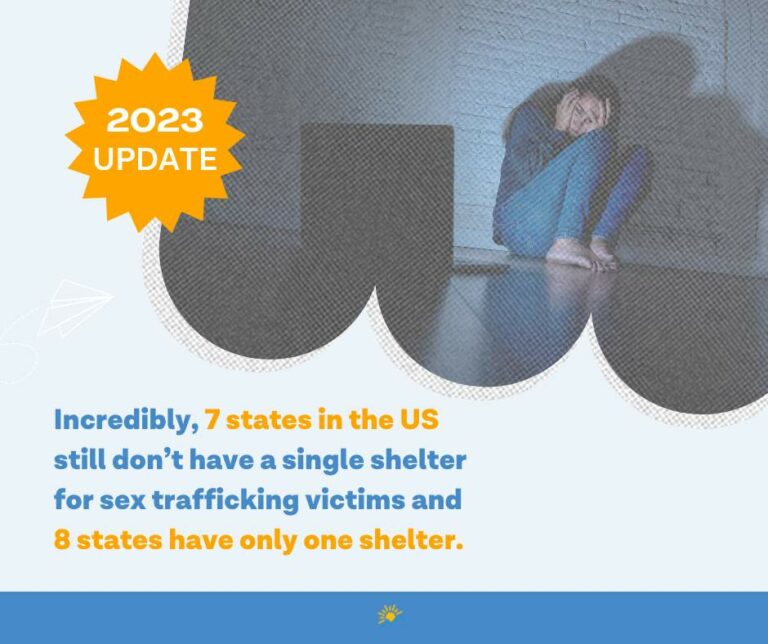How many of us think that porn industry sex trafficking is a foreign problem in a faraway place or another continent — like perhaps Eastern Europe, Africa, or Asia?
Sex trafficking and porn go hand-in-hand in the U.S., according to sex trafficking survivor advocates.
Not long ago I had the same idea that human slavery via sex trafficking wasn’t a huge problem in the United States. Maybe the underpaid, overworked “imported” housekeeper was a problem, but surely not sex slavery!
A friend I met from the Naval Criminal Investigative Service (the real NCIS) bluntly but kindly set me straight. She informed me that every major city and especially every major port city in the US is a hub of every kind of human trafficking.
Hard truth: domestic sex trafficking is underestimated and under-reported.
Our interview with Linda Blackiston of The Samaritan Women, a nonprofit located in Baltimore, reinforced the growing problem and great needs of victims of sex trafficking.
Linda is an experienced and compassionate advocate for sex trafficking survivors. She served for 11 years as a trained volunteer working with sex trafficking survivors at The Samaritan Women. She also worked for eight years on their Board of Directors.
Underestimating our domestic sex trafficking problem is a common misconception, notes Linda.
Due to organizations like The Samaritan Women and others, awareness of sex trafficking is gradually growing. But the need outstrips the awareness — and a growing number of victims are minors.
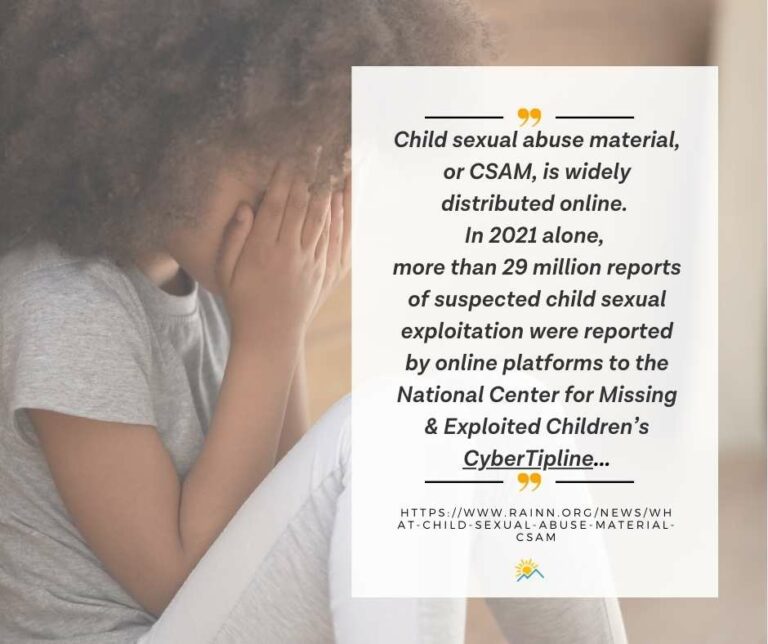
So what can you and I do to fight this ugly problem? Supporting shelter care programs for victims of sex trafficking is one vital step.
The Samaritan Women: providing real solutions for sex trafficking victims
For many years, The Samaritan Women functioned strictly as a residential program for female victims of sex trafficking — aged 18 and up.
The dire need for more shelter programs specifically for exploited and trafficked persons caused them to make a focused pivot in 2019-2020 and The Samaritan Women – Institute for Shelter Care was formed.
Linda Blackiston now serves as a passionate advocate for sex trafficking victims with The Samaritan Women – Institute for Shelter Care located in Baltimore City.
While they no longer operate a residential program, their vital mission is to fill the huge void of much-needed shelter programs for sex trafficking victims in the U.S.
Shelter care programs are a vital way of escape and recovery for sex trafficking victims.
Sex trafficking victims cannot find freedom without caring, committed mentors to help them create a fresh start in life. So, how do they find shelter care?
Often the police will break up a brothel type situation, and bring unwilling sex trafficking victims into a shelter, says Linda.
They’ve only come to a shelter because they were given some tough love by caring law enforcement. For example, an officer will say,“You either pay a judge, do prison time, or you join a shelter program.”
However, providing a safe environment is not enough. When a young woman unwillingly arrives in shelter care, it’s a unique challenge to break through her walls and deeply rooted false beliefs about self.
Showing patient love and demonstrating to each woman that she has worth and value is a top priority for those who work in a quality shelter care program.
Why the Samaritan Women became a shelter-care training organization
Incredibly 6 states in the US still don’t have a single shelter for sex trafficking victims and approximately 8 states have only one shelter. You can find the current state shelter statistics here.
To address this national crisis, the goal of the Samaritan Women is two-fold. First, they plan to increase access to care by planting and equipping more faith-based shelters across the country.
Secondly, they work to improve the quality of care through research, standards, and program accountability. They are currently working with 13 start-up shelters and 16 existing shelter programs with the goal of reaching 40 shelters by 2024.
Their in-depth training program is gleaned from their many years of hands-on experience.
Additionally, they provide a three year mentorship program for new and existing organizations who become mentees in the program.
Why people deny sex-trafficking is a problem in the U.S.
Linda explains, “Victims of sex trafficking are actually all around us, and we often walk blindly by them. The strange truth is that sometimes even the sex trafficking victims themselves don’t realize they are actually being trafficked.”
You and I are left to wonder in our modern age, how is this even possible?
How do people become victims of sex traffickers without realizing it?
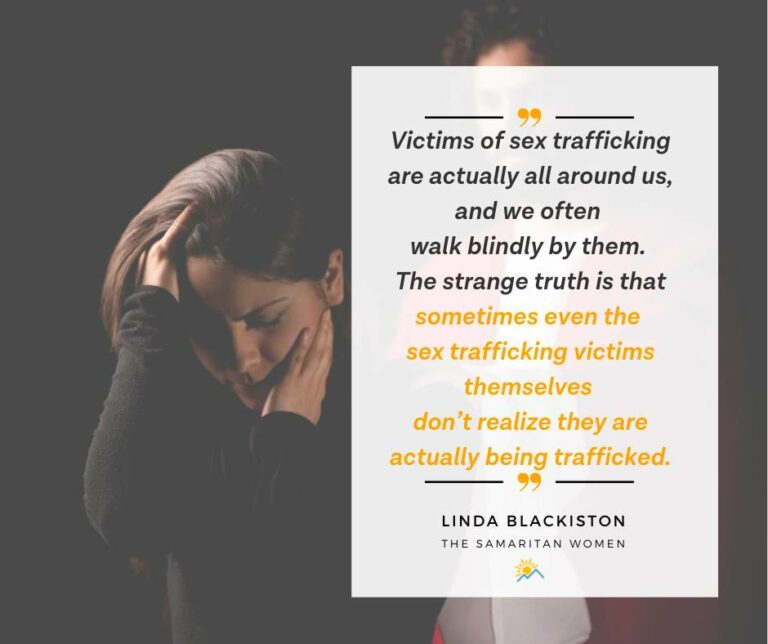
Commonly shared traits of sex trafficking victims
1.) Over 80% of sex trafficking victims have been sexually abused as a child.
Linda notes that The Samaritan Women’s Shelter documented an astounding 94% of the survivors in their program suffered sexual abuse as a child.
(Recently an Ever Accountable customer shared his story of being hooked on porn partly as a result of being sexually abused as a child. It’s an often under-reported crime.)
Because of this abuse, these young women never learned their personal worth and value. Sexually abusive treatment feels normal to them.
Feeling unloved and unworthy leaves young women wide open for grooming by a skilled sex trafficker or perpetrator.
2.) Many victims meet their perpetrator in person.
More and more frequently, young women meet their perpetrator online. Other times, they meet their perpetrator outside of school.
But almost always a vulnerable young woman meets their perpetrator in person before becoming a victim.
3.) Children in the foster care system are more vulnerable to sex traffickers.
Though the foster care system plays a vital role in helping children, children in the foster care system are statistically more vulnerable to sex trafficking.
Research shows that by age 18 children in foster care will generally have lived in 11 different homes. This leaves them very open to grooming, because of their deep desire to belong and to be loved by someone.
4.) Most sex trafficking victims are purposely groomed by their perpetrator.
Sex-trafficking perpetrators use common manipulative tactics on their victims such as befriending underage victims online, listening to their problems, and pretending to be a caring advocate.
After they’ve lured their victims in, perpetrators still frequently use phrases like, “I love you and I’m trying to take care of you. I’m doing this for your own good.”
Or another popular line — “You’re my favorite!” — very attractive language for a young person looking for love in all the wrong places.
Due to low self-esteem, these young women have no trouble seeing themselves as a commodity to be sold.
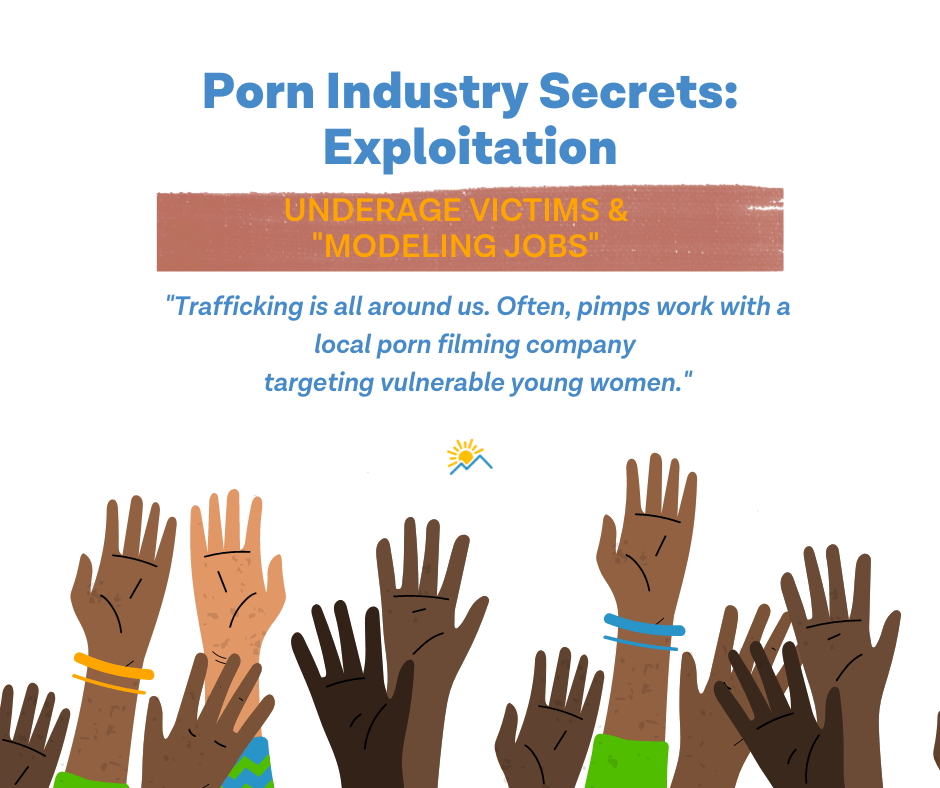
How the porn industry sex trafficking network entices victims
Sometimes young women caught by sex traffickers actually responded to an ad for modeling. Or, they were told they would be shooting part of a certain video.
Instead, they ended up in a completely different and unexpected kind of video appointment for a pornographic video. Often they’re ashamed and horrified about what they’ve gotten into, notes Linda.
Basically they’re being filmed for porn against their will. These young women are threatened that if they ever tell somebody, then the perpetrators will send their videos to their family or friends. It’s outright sextortion and deceit.
Victims are understandably afraid. Many don’t have anyone to help them break free.
In spite of being exploited and lied to, porn industry sex trafficking victims often call their perpetrators their boyfriend or their fiance. Some even call their perp, “Daddy” due to deep unmet emotional needs.
Upon arriving in shelter care, young women must face the difficult truth that they’ve been severely abused in order for the healing process to begin.
Most have been brainwashed since childhood to believe they’re just objects to be used.
Here’s where a caring, trained mentor plays a beautiful, difficult, and vital role. Sex trafficking victims desperately need a new normal to be modeled for them.
Linda talks about this process, “As we worked with the women in our shelter to teach them appropriate relationships and behaviors somewhere down the line their light bulb moment comes. They suddenly realize that they were actually a victim of sex trafficking. That is a bittersweet moment. Healing can begin as they identify their trauma.”
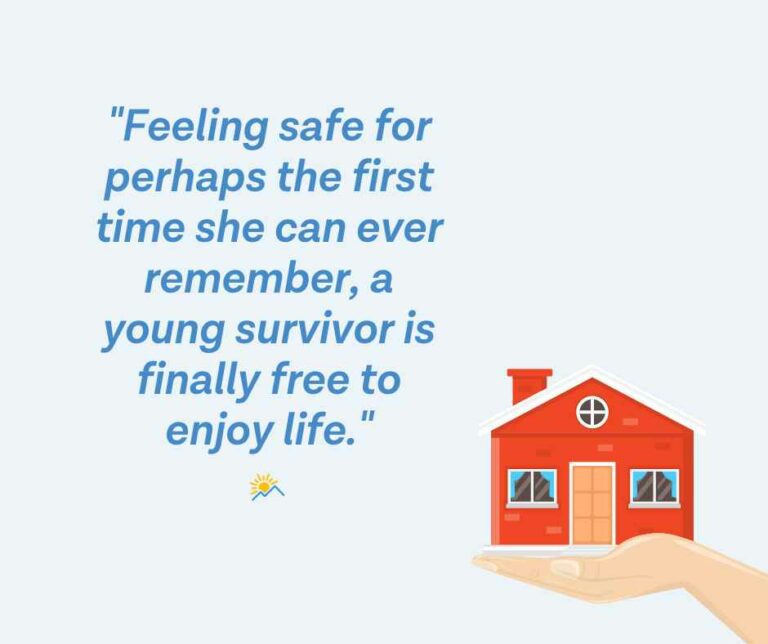
How shelter care programs positively impact communities
When healing begins, survivors of sex trafficking often start a journey of amazing discoveries!
Feeling safe for perhaps the first time she can ever remember, a young survivor is finally free to enjoy life.
Shelter care programs enable and empower young women to discover their untapped talents. Trained workers deeply invest in each woman to help them begin healing.
At whatever point trauma happened in their lives, these young women stopped developing emotionally and mentally.
So many have never experienced simple joys of childhood, like blowing bubbles!
They’ve never had a birthday cake or celebration. Never experienced all the common things a child should enjoy. Learning to play and enjoy life is a vital step of healing.
Linda has personally witnessed the rewards of investing in each precious life.
“I’ve worked with young women who discover they have a real talent for art or music — songwriting, singing, and playing an instrument. They discover new passions. We get to hear their voices and see their talents emerge. One of our young ladies enjoyed making jewelry so much that she started selling it. Another young lady experimented with baking — and she opened a cheesecake business!”
Benefits ripple out to an entire community when even one life is restored. Imagine the difference that hundreds of shelter programs could make!
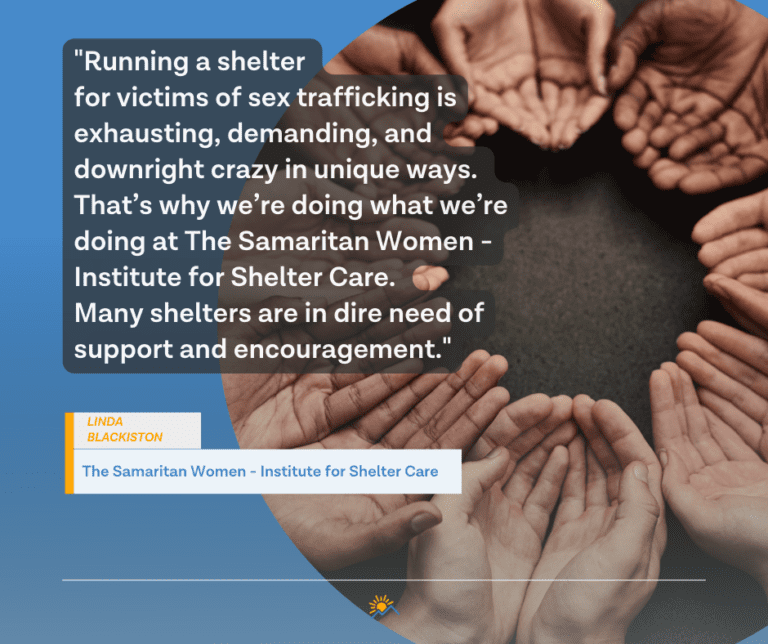
What you can do to help sex trafficking victims
1.) Support your state’s shelter or help open a shelter.
“Running a shelter for victims of sex trafficking is exhausting, demanding, and downright crazy in unique ways,” says Linda, “That’s why we’re doing what we’re doing at The Samaritan Women – Institute for Shelter Care. Many shelters are in dire need of support and encouragement.
And there’s a huge lack of shelters in the first place. Our vision is that any survivor anywhere in our nation would have access to qualified, compassionate care.”
The needs are enormous!
According to the Samaritan Women’s data map, as of July 2023, only 235 active, open shelter programs exist in our entire nation for an estimated hundreds of thousands of victims.
That’s a massive shortage! Some brave souls are stepping forward to fill in the huge gaps, and they need our support.
For example, Linda introduced me to the amazing Julie Crain of Harriett’s House in Cambridge, Maryland. Julie has been trained and is being mentored by The Samaritan Women – Institute for Shelter Care.
Harriett’s House is a brand-new shelter that now is open for both short-term and longer-term residential care! (July 2023 update)
2.) Stop using porn — because sex trafficking in the porn industry is rampant.
Porn is a powerful, well-funded industry. There are too many stories of other under-aged victims of sex trafficking tricked into being filmed against their wishes. Or, they sign up to film porn, but then change their minds along the way. Breaking free is hard! Alia’s story (scroll to the bottom) is just one example.
How can you tell if the porn you’re watching is created from someone who’s being trafficked? According to Fight the New Drug, you simply can’t. The only way to be sure is to never use porn.
3.) Share this article to raise awareness.
No matter the size of your budget, there’s always something you can do to help. One share at a time can significantly impact one life at a time. So share, share, share!
Our mission at Ever Accountable is to help people everywhere quit porn through the power of accountability. We also believe that raising awareness for the victims of porn is vitally important.
To help rescue more beautiful lives, let’s band together against the powerful evil of porn. Please consider supporting the complementary missions of organizations like The Samaritan Women – Institute for Shelter Care.

